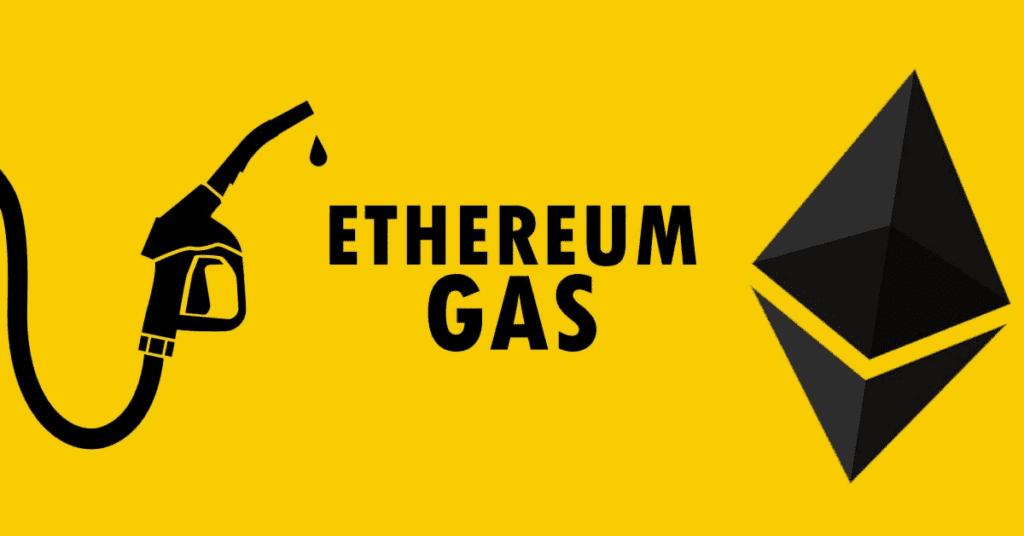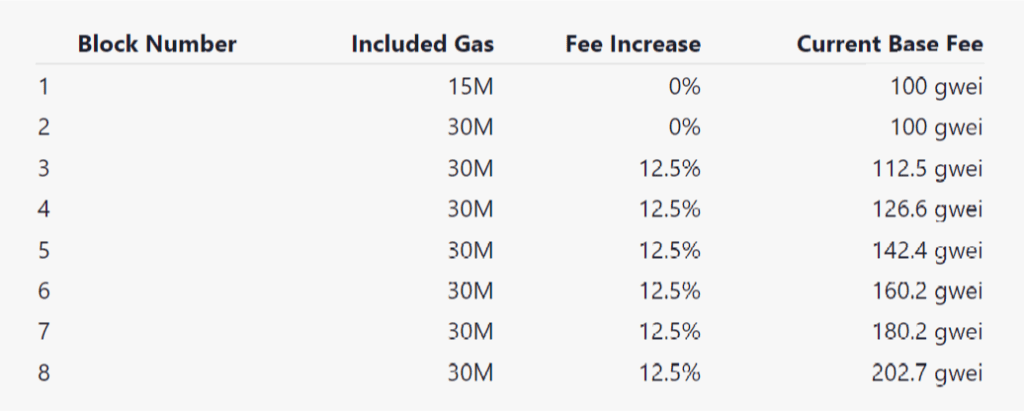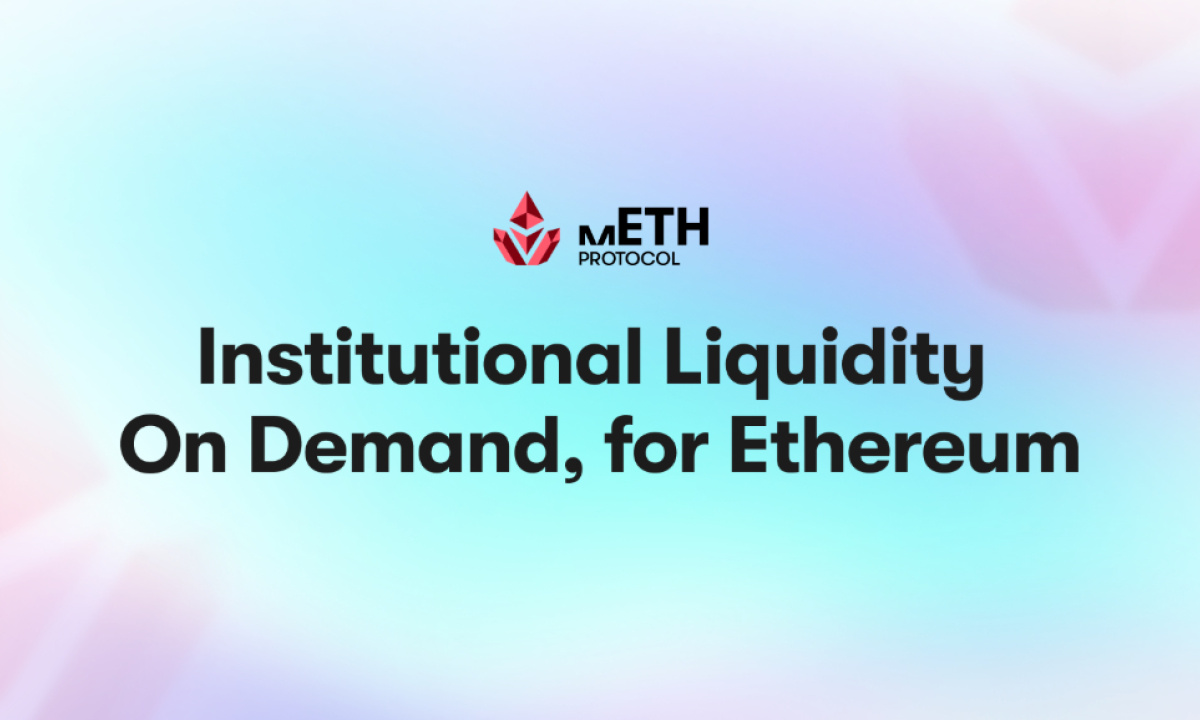Key Points:
- Overview of ETH Gas.
- How Gas Fees Work on Ethereum Blockchain.
- Why can gas fees get so high?
- Tips to reduce gas fees.
ETH gas is a necessary concept for traders participating in transactions on Ethereum and Gas fee is the cost required to make a transaction on the Ethereum Blockchain. However, it is not certain that you have a clear understanding of these concepts and how it works. There are also many questions about why gas fees on Ethereum are so high? In today’s article, let’s shed some light on these questions.

What is ETH Gas?
Gas refers to the unit that measures the amount of computational effort required to execute specific operations on the Ethereum network.
Since each Ethereum transaction requires computational resources to execute, each transaction requires a fee. Gas refer to the fee required to conduct a transaction on Ethereum successfully.
Gas fees are paid in Ethereum’s native currency, ether (ETH). Gas prices are denoted in gwei, which itself is a denomination of ETH – each gwei is equal to 0.000000001 ETH (10-9 ETH).
For example, instead of saying that your gas costs 0.000000001 ether, you can say your gas costs 1 gwei. The word ‘gwei’ itself means ‘giga-wei’, and it is equal to 1,000,000,000 wei. Wei itself (named after Wei Dai, creator of b-money) is the smallest unit of ETH.
The gas concept was introduced to compensate miners for the work they did to maintain and secure the blockchain. After the PoS algorithm was implemented in September 2022, gas fees became a reward for staking ETH and participating in validation, the more users bet, the more money they earn.
Gas Fees Works On Ethereum
The way transaction fees are charged on the Ethereum network changed with the London Upgrade in August 2021. The total fee will now be: units of gas used * (base fee + priority fee) where base fee is the value set by the protocol, and the priority feel is the value set by the user as the tip for the validator. A typical transaction will cost about 21000 gas, while more complex transactions will cost more gas.
Base fee
Every block has a base fee which acts as a reserve price. To be eligible for inclusion in a block the offered price per gas must at least equal the base fee. The base fee is calculated independently of the current block and is instead determined by the blocks before it, making transaction fees more predictable for users. When the block is mined this base fee is “burned”, removing it from circulation.

The base fee is calculated by a formula that compares the size of the previous block (the amount of gas used for all the transactions) with the target size. The base fee will increase by a maximum of 12.5% per block if the target block size is exceeded. This exponential growth makes it economically non-viable for block size to remain high indefinitely.
It’s also important to note it is unlikely we will see extended spikes of full blocks because of the speed at which the base fee increases proceeding a full block.

Priority fee (tips)
Before the London Upgrade, miners would receive the total gas fee from any transaction included in a block.
With the new base fee getting burned, the London Upgrade introduced a priority fee (tip) to incentivize miners to include a transaction in the block. Without tips, miners would find it economically viable to mine empty blocks, as they would receive the same block reward. Under normal conditions, a small tip provides miners a minimal incentive to include a transaction. For transactions that need to get preferentially executed ahead of other transactions in the same block, a higher tip will be necessary to attempt to outbid competing transactions.
Max fee
To execute a transaction on the network, users can specify a maximum limit they are willing to pay for their transaction to be executed. This optional parameter is known as the maxFeePerGas. For a transaction to be executed, the max fee must exceed the sum of the base fee and the tip. The transaction sender is refunded the difference between the max fee and the sum of the base fee and tip.
Calculating fees
One of the main benefits of the London upgrade is improving the user’s experience when setting transaction fees. For wallets that support the upgrade, instead of explicitly stating how much you are willing to pay to get your transaction through, wallet providers will automatically set a recommended transaction fee (base fee + recommended priority fee) to reduce the amount of complexity burdened onto their users.
Why can gas fees get so high?
High gas fees are due to the popularity of Ethereum. Performing any operation on Ethereum requires consuming gas, and gas space is limited per block. Fees include calculations, storing or manipulating data, or transferring tokens, consuming different amounts of “gas” units. As dapp functionality grows more complex, the number of operations a smart contract performs also grows, meaning each transaction takes up more space of a limited size block. If there’s too much demand, users must offer a higher tip amount to try and outbid other users’ transactions. A higher tip can make it more likely that your transaction will get into the next block.
Gas price alone does not actually determine how much we have to pay for a particular transaction. To calculate the transaction fee, we have to multiply the gas used by the base gas fee, which is measured in gwei.
Tips to reduce gas fees
Check average gas fee at the time of transaction
You can check the average gas price of the Ethereum Blockchain at etherscan.io/gastracker. Setting gas prices below average will save more costs, while setting gas fees equivalent to high will make your transaction faster. It is completely unnecessary to set a higher gas fee.

Postpone transaction if gas fee is too high
Stay away from the time when gas prices are high if you want to save costs, not every time of the day the gas price is the same but it will fluctuate according to the transaction needs of the network.
Edit gas limit if necessary
Although adjusting the gas limit does not change the gas fee you have to pay. However, having a high gas limit may cause the estimated gas fee to be higher, leading to your inability to trade. Let’s say you have 0.01 ETH left in your account but the transaction requires 0.012 ETH because the gas limit is up to 500,000. You can adjust the gas limit down a bit because usually the transaction will not consume all the original estimated gas limit. However, be very careful because if the transaction consumes too much gas, it will fail.
Absolutely do not confuse gas price with the amount of ETH you want to transfer
Because the gas price can be set as much as you want, you can lose a huge amount of money if you enter the wrong gas price instead of the ETH you want to transfer to the customer. Always double-check transactions before pressing the transfer button. Blockchain cannot refund any erroneous transactions.
Gas fees on other Blockchains
Most other Blockchain platforms use the same gas fee mechanism as Ethereum, you have to use the network’s own coin to pay the gas fee. However, the NEO Blockchain is a special case, gas is separated into a separate coin called GAS and you will have to pay transaction fees in GAS, not NEO.
Hopefully, through the above article, readers can have an overview of ETH gas and gas fees on ethereum. Please give your feedback in the comments section to make our article better.
DISCLAIMER: The Information on this website is provided as general market commentary and does not constitute investment advice. We encourage you to do your own research before investing.
Join us to keep track of news: https://linktr.ee/coincu
Website: coincu.com
Foxy
Coincu News






















